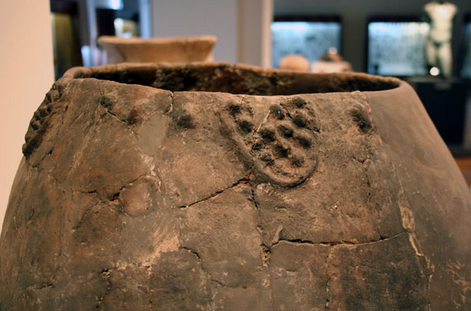 |
| Photo Stephen Batiuk |
18.06.2015. Next time you bring wine to the party, consider raising a glass to the ancient people of the Republic of Georgia for helping make the grape beverage such a popular social lubricant.
An archaeological dig at the site of Gadachrili Gora, near the village of Imiri in southeastern Georgia, recently unearthed the earliest evidence of domesticated grapes from about 6000 BC, according to carbon-dating analysis.
This fits with other evidence that the people of the Caucasus region were not only the first to master viticulture but may have also spread wine technology to the “Fertile Crescent” of the ancient world, helping civilizations in places such as Mesopotamia and the Eastern Mediterranean begin to flourish.
“Once people from the Caucasus start to move into these new neighborhoods, you start to see wine drinking really take off and it becomes an integral part of the society,” said Stephen Batiuk, of the University of Toronto’s Archaeology Centre and the department of Near & Middle Eastern civilizations, who is part of an international team working in the area.
Batiuk was recruited to join the “Research and Popularization of Georgian Grape and Wine Culture” project, sponsored by the government of the Republic of Georgia, based on his groundbreaking research suggesting the Early Transcaucasian culture helped to catalyze other societies by taking their wine-making skills to other countries about 5,000 years ago.
“Rather than being viewed as unwelcome interlopers, they brought something new and valuable to the table,” said Batiuk.
“Wine became something that is used and manipulated by the emerging elites. This is also the same time that people are beginning to live in the cities. And so you have the hierarchies of city life that are starting to emerge and wine becomes an important tool being used by these groups.”
Batiuk formed his theory when he overlaid a map of the grape-growing areas in the Fertile Crescent with the migration patterns of the Early Transcaucasian culture – it was a near perfect match.
He would like to prove that the migrants from the Caucasus not only moved into regions where grapes grew so they could pursue their craft, but also brought their own domestic varieties to the new lands. Right now, that theory is a “bit of a pipe dream” that will take more time and better evidence to establish as fact, said Batiuk, just as more work needs to be done to categorically link the traces of the earliest domesticated grapes found in the excavations of Gadachrili Gora with actual wine production.
The research at Gadachrili and other sites near Imiri is causing quite a stir in a country with more than 500 varieties of grapes.
“You walk down the street and everything has an image of a grape drawn into it or carved into it. You look at their folk songs, their art – wine is in there somewhere,” said Batiuk.
“This is why the Georgians are all excited about these discoveries, because they show this is where wine was first made, and you have 8,000 years of history of wine production in this area. It helps explain why wine is so it’s deeply embedded in Georgian culture.”
The Western civilization that emerged from those ancient Fertile Crescent cultures in the Middle East and Mediterranean also owes a toast to the Caucasus and the unifying force of their wine-making heritage.
Conflicts that arise from fears about immigrants taking land, jobs and resources are not just modern phenomena, they occurred in ancient times as well. “But these migrants from the Caucasus were coming in and occupying a different economic niche, so there was no conflict with the indigenous inhabitants,” said Batiuk.
But wine played an important role as well.
“It acted as a good social lubricant and a tool to help communities live together. As a result, we see wine playing a more important role in these developing urban civilizations of the ancient Middle East.”



No comments:
Post a Comment